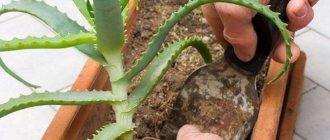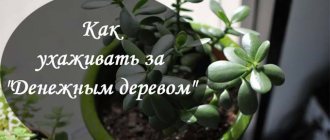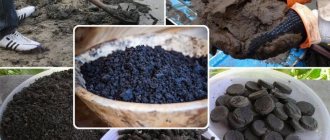Many gardeners have encountered the fact that their violets do not want to develop normally, although they are systematically watered and choose a place with suitable lighting. As a rule, upon detailed analysis of care, it turns out that they do not comply with the only condition - the correct application of fertilizers for violets (Saintpaulias).
The main mistakes may be due to the fact that universal preparations are not suitable for these flowers, since they have their own characteristics. People who use such complexes are doomed to contemplate green bushes without buds and inflorescences, and in the worst case, to watch the plants gradually wither. To apply suitable fertilizing, it is enough to know the main features of this species and apply it in practice, which is not at all difficult.
Biological features
The nutrient requirements of violets are higher than those of other plants. There are several reasons for this:
- Extended growing season . Saintpaulias have a short rest period, and during the long growing season they need a high content of active elements in the soil.
- Long flowering . For many varieties, the decorative period lasts 10-11 months, which is very costly in terms of nutritional resources. For them, a constant supply of resources along with watering is critical.
- Small volume of substrate . For normal development of Saintpaulia, the root system needs to be crowded, otherwise it will stop budding and begin to hurt. In a small volume of land, food runs out even faster, so its reserves must be constantly replenished.
In addition, it is important to know that fertilizing for violets in a diluted state should have a slightly acidic pH reaction. Universal fertilizers for flowering crops do not give this effect, so their use is not recommended.
Secrets of flower growers
Some useful tips from experienced gardeners for trouble-free growing of home violets
It is better to skip the next feeding or not add fertilizers than to overfeed the plant. If there are too many nutrients in the soil, the violets will acquire lush greenery, but may stop blooming. It is especially important not to overdo it with nitrogen fertilizers.
If the leaves of the plant become pale, it means that the violet does not like its location, or it is frozen. Move the plant closer to the heat source.
When the leaves grow too densely and densely, the air is excessively dry. Spray the air around the flower more often and maintain normal humidity using other methods.
If the foliage is too small and stretches upward or towards the light source, the violet clearly does not have enough lighting. To restore the plant’s decorative appearance, maintain a sufficient level of lighting in the room. The violet should be illuminated for at least half a day.
Since Saintpaulia overgrows with children over time, periodically plant the plants so that they are not too crowded in one pot.
Necessary substances
Throughout the year, violets need different elements, which are contained in complex flower fertilizers. The main ones:
- Nitrogen . The most important substance that is necessary for the construction of new cells. Without it, the growth of green mass does not occur, so for young bushes until the buds appear, nitrogen is the most important. When the decorative period begins, the need for it decreases, but does not completely disappear.
- Potassium and phosphorus . They ensure the formation of flowers, the number of buds on the bush, the brightness of the color and the duration of flowering. In addition, phosphorus and potassium allow the root system to remain healthy and active, making it easier to endure stress and unfavorable periods.
- Humates . The chemical basis of humus as a source of organic matter. They are needed for the continuous flow of all vital functions, accelerate cell division, increase immunity against infections and fungi, and also regulate water balance.
- Microelements . Violets need sulfur, calcium, magnesium, boron, iron, manganese, zinc, molybdenum and copper throughout the year, but in minimal quantities. Each of these substances makes the plant stronger and more luxuriant. Without microelements, the bush will not die, but its decorative properties will be greatly reduced if there is a deficiency.
When choosing fertilizers, you should pay attention to the presence of all these substances in the composition.
Feeding calendar
When budding or active growth of violets begins, it is time to fertilize. It is necessary to feed violets in summer and spring. From September it is better to stop adding fertilizers, since after flowering the plant’s growth subsides and it does not need extra loads. Fertilizing violets is a simple procedure; it will only bring benefits to Saintpaulia.
It should be borne in mind that there is a moment when applying fertilizers can greatly harm home beauties:
- After transplantation, when the plant adapts to the new container, it is sufficiently weakened and it is better not to apply fertilizer.
- If the soil is too dry, it needs to be watered before fertilizing. Otherwise, the fertilizer may burn the roots.
- When the room temperature is too low or high.
- When the leaves are exposed to direct sunlight.
You may be interested in: What fertilizers to apply in the fall: fertilizing options
You should not feed the plant when replanting. It is necessary to select soil rich in nutrients. If the violet was purchased in a store, you need to give it time to acclimatize in new conditions (about 2 weeks). There is no need to try to feed the plant at this time.
In spring, it is best to apply nitrogen fertilizers. Nitrogen is useful for increasing vegetative mass. As soon as the buds appear, you need to eliminate nitrogen fertilizers. For rapid flowering, it is better to feed Saintpaulia with phosphorus and potassium. Feeding is carried out once every two weeks in the following ways:
- The liquid fertilizer solution is added to the pan.
- Introduce at the root so that the fertilizer does not get on the leaves.
Signs of Deficiency
Nutritional deficiencies can be judged by a general decline in growth or lack of nutrition. But experts will recognize an acute deficiency of individual micro- or macroelements by certain signs:
- Nitrogen - crushing of leaf blades, shoots and old leaves from bright green become light green or yellow. At the last stage, the edges of the leaves curl up, a black border appears, and they fall off.
- Phosphorus - delayed flowering, purple tint of foliage. Symptoms are first visible on old leaves and then appear on new ones.
- Potassium - dead dark spots become noticeable on the leaf blades, the edges darken and wrinkle. The plant becomes susceptible to various diseases.
- Sulfur - Deficiency symptoms are similar to nitrogen deficiency, but leaf fall does not occur.
- Calcium - young shoots become dark green in color, and the root system becomes covered with mucus.
- Magnesium - discoloration of leaf blades and veins, yellow stripes may appear.
- Iron - yellowness of young foliage, without spots, uniform color change.
- Boron - a sharp slowdown in growth and a decrease in resistance to viruses, bacteria and fungi.
When applying fertilizers in a complex manner, there is no need to track the individual intake of each element, so this option is considered the most successful.
When not to fertilize
Excess nutrition is just as harmful as deficiency. Therefore, it is important for flower growers to know in what situations Saintpaulias do not need fertilizer:
- For two months after transplantation. During this period, the plant has enough of the substances that are in the fresh substrate. In addition, after transplantation, the roots are injured; their suction hairs must be stabilized before they can absorb solutions with minerals.
- At temperatures above or below normal. Both cases force the plant to suspend its development, and if it continues to initiate growth, it can cause deformation of the shoots and disruption of physiological processes.
- Unhealthy specimens. If any signs of disease are detected, fertilizing is stopped immediately and the normal regime is restored only after the plant has fully recovered.
In all these situations, adding nutrient solutions will cause the violet to deteriorate.
Features of caring for violets
Most often, gardeners plant the following varieties of Saintpaulia:
- terry;
- alpine;
- ampelous;
- royal;
- miniature violets;
- variegated;
- Saintpaulias (Usambara violets);
- chimeras;
- trailers.
Variegated
Miniature
Royal
Ampelnaya
Alpine
Terry
Trailers
Chimeras
Despite such a variety of varieties, caring for them is not difficult, because the basic rules of care are the same for all these indoor plants.
Let's take a closer look at caring for these small, lovely indoor flowers. Before breeding them in your apartment (or office), you need to have a good understanding of all the nuances of caring for Saintpaulias.
Lighting
And you should start with lighting. During the day, these plants require sufficient light for 13-14 hours.
In the spring and summer, the duration of daylight hours is quite long, but in autumn and winter, fluorescent lamps or other lighting devices should be installed to extend the short daylight hours.
Watering and humidity
Violets need regular watering, but without stagnation of water in the soil . The soil should be kept constantly moist, but not too wet. Pots should have drainage holes and a layer of drainage material should be placed at the bottom of the containers. Moss also absorbs excess moisture well. It is usually added to soil mixtures for planting Saintpaulias.
In the room with containers with these flowering plants, a certain air humidity and temperature are maintained:
- These flowers need appropriate humidity - about 50% ; lower or higher humidity levels are detrimental to these flowers.
- In a dry room, plants grow and bloom worse , and if the room is too humid, the plants can be affected by various types of rot.
- The air temperature is maintained within 19-25℃.
Soil and fertilizing
To plant violets, it is better to purchase a ready-made substrate in specialized stores. Typically, the nutrient mixture contains various humuses, moss and river sand.
We talked separately about feeding Saintpaulias - what fertilizers they need during the growth process, the formation of buds, and also after flowering. We learned how to feed a flower at different times of the year, and what to add for the active growth of children.
Secrets of growing violets
When growing violets, follow the principle: it is better to underfeed the plant than to apply too much fertilizer. With an increase in the amount of nutrients in the soil, violets can too actively increase the vegetative mass to the detriment of flowering, and sometimes the appearance of buds stops altogether.
And also do not get carried away with applying fertilizers containing nitrogen - this microelement provokes vigorous growth of foliage.
Forms of drugs
Complex fertilizers for Saintpaulias are produced in the following forms:
- liquid;
- powdery;
- in the form of granules or sticks.
Experts recommend choosing liquid medications. They are easier to dose when it comes to indoor growing, and at the same time they are safer to use. This is due to the fact that they are easier to mix and average the concentration compared to crystals. That is, the risk of root burn is much less.
In dry form, the cooking time increases, and dissolution may not be complete. In this case, it is advisable to prepare the solutions in advance so that they have time to average out, but before watering, the liquid is still mixed well.
Powdered drugs dissolve better than crystals.
Granules and sticks provide a prolonged effect. The granules are mixed with the soil at the time of transplantation or they are scattered on the surface, after which the soil is loosened so that they get deeper. The sticks are simply inserted deeper into the ground. But such forms are not the best option for Saintpaulias, since granules or sticks in direct contact with the roots can cause them to burn. But on the other hand, this minimizes plant care, since you don’t have to prepare a nutrient solution every week or two.
Mineral fertilizers for feeding
Simple and complex mineral fertilizers for Saintpaulia are produced; they come in the form of sticks, tablets or liquid form. Liquid fertilizer must be dissolved according to the instructions. Then they fertilize the violet at the root or along the leaf.
You may be interested in: Fertilizer for spathiphyllum for proper development and flowering
Sticks or tablets are simply stuck into the soil. They decompose after regular watering, and nutrients then reach the roots of Saintpaulia.
The most popular fertilizers:
- Master;
- Good power;
- Buoy fertilizer;
- Fusco;
- Etisso;
- Peters;
- Fertika;
- Bona Forte.
Complex drugs
All complex preparations indicate the NPK formula, that is, the ratio of nitrogen, phosphorus and potassium. In addition, the instructions for the fertilizer for violets should contain information about other components - microelements, amino acids, vitamins and humates. At different stages, the plant needs different ratios of the NPK complex:
- High nitrogen content . It is used for rosettes, planted children and young bushes before bud formation begins.
- Focus on phosphorus . Suitable for specimens at the stage of flower formation, as it stimulates the growth of buds in adult Saintpaulias and produces abundant flowering in the future.
- Increased amount of potassium . Causes bright coloring of petals and resistance to lack of lighting. Prevents sealing of the middle part of the socket.
It is recommended to choose a complex taking into account the physiological stage.
The best fertilizers for violets are:
- "Fasco". This is a professional specialized product with an ideal balanced formula. It not only gives the plant everything it needs, but also improves the soil structure. The instructions for use say that the Fasco fertilizer contains all substances in a chelated, easily accessible form, so its use very quickly improves the appearance of violets.
- "Mr. Color" It is convenient that the liquid concentrate is dosed into a small volume of water, so those who have a little Saintpaulia can use the drug. Can be used in soil and hydroponics.
- "Stimovit." Organo-mineral complex, suitable for fertilizing and soaking before transplanting. Acts as a root former and growth activator.
- "Good Power" In addition to the standard set of substances, it contains succinic acid. It accelerates the absorption of nutrients from the soil, activates photosynthesis, etc.
- "Bona Forte". A solution that contains everything necessary for good vegetation and flowering of violets. The bottle is equipped with a dispenser cap, which is very convenient for preparing the required volume.
All of them moderately acidify the soil, and Saintpaulias need this for the normal development of the root system.
How to care for ha violets
Even if you chose the right place and purchased a young healthy plant, this does not mean that the violet will not require care and will grow on its own. Of course, this is not at all true. For decoration and abundant flowering, your plants need good care, which includes several components:
- selection of suitable soil. When you decide to replant your violet, be sure to purchase special soil from the store. If you cannot purchase it for some reason, prepare the necessary mixture yourself by adding peat and sand to the ground. In this case, it is best to take soil from under pine and birch trees. You should not pour a lot of sand; if the soil is not loose enough, add perlite to it;
- correct watering. Violets do not care at all what kind of watering they receive, so you must know exactly what you can water these flowers with and what you should never water them with. Water for irrigation must sit for at least a day and must be warm, not lower than room temperature. Otherwise, brown spots will appear on the leaves;
- maintaining moist air in the room where your Saintpaulias are located is the second name for violets. These flowers prefer to grow in high humidity, but their hairy leaves cannot be sprayed, they do not like this. You can place saucers of water between flower pots or simply place them on wet stones, placing pebbles or gravel in a tray;
- Feeding with the right fertilizers is very important for violets; it is an essential component of their care. You can fertilize violets with a special composition, which is sold in liquid form in the store. You can dilute it with water in the required proportions and simply add it to water for irrigation.
However, I feed my violets a little differently - I put them in trays with water, to which fertilizer has been added in the right amount. Then the flowers are constantly moisturized and can receive as much water as they need. With such bottom watering, trays with pots can be safely placed on window sills; central heating radiators will not harm them.
In addition, water is guaranteed not to get on the violet rosette, which these plants simply cannot tolerate, and the leaves will not get burned if splashes of water remain on the leaves under the bright sun. In addition, with bottom watering you will not flood your Saintpaulias. By the way, when flooded, the plant can die in a matter of days.
Fertilizer should be applied no more than twice a month, so there is no need to constantly add it to the water for irrigation. At the same time, home remedies are also suitable for violets:
- you can add a little regular dry tea leaves to the soil;
- Coffee grounds are used as fertilizer, mixed with soil;
- an infusion of citrus peels is very good for violets, just don’t make it too concentrated;
- A decoction of onion peels is perfect for watering;
- no more than once a month you can water the violets with sugar water or diluted yeast. You can combine both.
This sucker is optimal for any flowering plants, not just violets. At first, when the leaves grow, nitrogen is needed, later, when the buds are laid, potassium and phosphate are needed. It is in this combination of fertilizers, applied in a timely manner and in the right quantity, that lies the secret of abundant flowering.
Home Remedies
Not all flower growers buy fertilizers for violets; there are staunch adherents of home remedies. If you use them correctly, you can really achieve good results.
Tea
Take used brewed black tea without flavorings. One part of the tea is mixed with three volumes of soil and this substrate is used when replanting. Such soil always has enough organic matter, it does not dry out and remains loose and light. The appearance and decorativeness of the bush only improve over time.
Coffee
For this you need spent and dried grounds. You can simply pour it into a pot on top of the soil, or you can mix it with the substrate during transplantation. The result will be similar to adding tea leaves, so even with infrequent watering, the risk of drying out is reduced, which makes caring for the plant easier.
Citrus
The zest or peel of citrus fruits is used. Their use increases resistance to fungi and bacteria. This is achieved thanks to citrus essential oils, since pests and parasites really dislike them.
The peel of orange, tangerine, kumquat, muraya, grapefruit, pomelo, etc. is suitable. You need to prepare it like this: wash the fruit, peel it, and pour boiling water over the skin. Let this infusion stand for a day, then strain the liquid through cheesecloth. Before use, dilute with warm water in a ratio of 1:10.
Onion
This vegetable not only helps Saintpaulia get nutrients, but also prevents many diseases. They use husks that are well boiled. After this, the liquid is cooled and used. This solution cannot be stored, as it deteriorates within a day or two even in the refrigerator.
Live yeast
These microorganisms have a positive effect on the condition of violets, accelerate their development and increase resistance to infections. The preparation method is as follows: 1 teaspoon of dry yeast is mixed with 2 tablespoons of sugar and dissolved in 5 liters of water. Place this preparation in a warm place for 4 hours. Then it is diluted with clean water in a ratio of 1:5.
Sugar
To prepare the solution, 1 tablespoon of sugar is diluted in a liter of water. It must be used immediately; it should not be stored for more than a few hours. This feeding is carried out once a month.
Types of fertilizers for violets
How to feed violets so that they bloom magnificently? To do this, they need phosphorus and phosphorus compounds. You need to purchase preparations containing phosphorus compounds in any combination at the flower shop. But products specifically designed for pelargoniums are of particular value. The Uniflor and AVA complexes perform well. With regular use of these drugs, plant flower stalks develop much faster, and the flowers delight with lush flowering.
Excess feeding is just as undesirable as its lack. If you overfeed a violet, it may stop flowering.
Agrochemical fertilizers for violets are produced in the form of concentrated solutions, tablets and sticks. The last two types are very convenient to use, as they do not require dilution in water. The tablet is simply placed in the ground and the sticks are inserted into the pot. When watering, dry substances dissolve and feed the roots with useful components.
Complex fertilizers
Complex fertilizers for violets include the following preparations:
- Etisso;
- Bona Forte;
- Master;
- liquid phosphorus fertilizer;
- Fertika;
- Fusco;
- Good power;
- Peters;
- Topaz;
- Schultz;
- Vermicompost;
- Cytokinin paste;
- other.
The listed preparations are convenient for home use, do not require special conditions for preparing the working solution, and effectively solve the issue of feeding Saintpaulia. Feeding violets for flowering improves the appearance of the plants and the color of the leaves.
Cytokinin paste promotes the formation of children, stimulates plant development and lush flowering. To propagate violets by children, scratches are made at the bottom of the stems with the tip of a needle. After this, the wounds are covered with paste and they wait for the babies to appear. They are budding and planted in separate containers with fertile soil mixture. Young violets require a lot of nitrogenous substances to develop. As soon as the plant gets stronger, feed it with a phosphorus-potassium mixture.
In terms of the content of phosphorus compounds, the drug Schultz is the leader; it is used to activate the formation of buds and the formation of buds. The complex also contains nitrogenous substances, but in minimal quantities. The drug has a gentle effect on the plant, without burning the root system and leaves. The downside is its low availability: not sold in all flower stalls and stores. However, Schultz can be ordered from the online store.
Organic fertilizers
Tea brewing
Among organics, the first place in use is taken by sleeping tea. Tea leaves should not contain any additional additives or flavor enhancers. The leaves from the tea leaves are poured directly onto the soil mixture in an even layer. The frequency of fertilizing is once every half month. You need to make a feeding calendar so as not to get confused.
Coffee grounds
Also a leader among organic ways to feed violets at home. In addition to fertilizing with valuable nutritional components, the grounds help loosen the soil and structure it. Experienced gardeners recommend stopping watering the plant after adding coffee grounds for 2 weeks: the ground underneath remains moist. However, if Saintpaulias grow in clay pots, you do not need to follow this recommendation: in ceramics the soil dries out much faster than in a plastic pot.
Yeast
Baker's yeast is a common top dressing for amateur and experienced gardeners: plants grow by leaps and bounds. However, yeast feeding is more about growth stimulants than nutrients. But yeast does a good job of strengthening the root and immune systems, providing the plant with everything it needs. To prepare the topping, fresh or dry yeast is diluted in lukewarm water with added sugar (as for dough). After 3 hours, the solution can be used for watering at the root. In spring and summer, the yeast mixture is given to Saintpaulia every 10 days, and in winter - once a month.
Plain sugar
Glucose is very important for flowers for full development and well-being. Sugar water is made at the rate of tbsp per liter. If you use pharmacy glucose tablets, then take one piece per liter of water. The leaves are sprayed with a sweet solution and the earthen ball is watered once a month.
Eggshell
It is used to strengthen the root system, because it contains a lot of calcium. In addition to feeding, the shell alkalizes the soil mixture and serves as a drainage system. A solution with eggshell powder (dried and ground in a coffee grinder) is prepared for 3 weeks. For one part of the powder, take 5 parts of water. When infusing, it is recommended to shake the container regularly. Water the pots with infusion once a month.
Garlic infusion
This product is used to protect flowers and leaves from fungal spores. Approximately 100 g of garlic cloves need to be crushed in a garlic press and filled with cool water in a volume of one liter. The mixture is placed in a dark place, covered with an airtight lid. After 5 days, the solution is filtered. For watering and spraying, prepare a mixture of a tablespoon of tincture and two liters of water. The frequency of violet processing is three times a month.
Aloe juice
Helps weakened plants lacking immune protection. The juice is squeezed from the leaves and diluted with water. This mixture is watered at the roots of violets.
Banana peel
The washed peel is dried until brittle (with the oven open or simply on a radiator) and ground in a coffee grinder. The ground is powdered with powder after replanting or simply for feeding. You can also make an infusion from banana peels. To do this, put the thoroughly washed peel into a three-liter jar (about a third full), add a tablespoon of granulated sugar and fill it with boiled water. The mixture is infused in a dark place for 3 weeks, shaking the container regularly. Then filter and store in the refrigerator. For irrigation, the infusion is diluted with water: part of the infusion to 20 parts of water. Water no more than once a month.
Onion peel
Onion dressing is also popular among gardeners. This is not only food for plants, but also the prevention of various diseases. To prepare the solution, use the husk. The active components of onion peels not only fight diseases, but also strengthen the immune system. The infusion also activates the development of the plant and promotes active flowering.
Take a handful of husks per liter of water. The composition is boiled for 5 minutes, cooled for about three hours and filtered. The leaves are sprayed with the decoction once every 30-40 days if flies appear. If the earthen lump is covered with a white coating (acidification has occurred), then it is also watered with this decoction. The onion solution cannot be stored, so it is consumed on the day of preparation.
Citrus
Citrus peels are an excellent nutritional substance for violets. The crusts need to be washed and chopped well. Fill half a liter jar with this mixture and pour boiling water to the top. After a day, the infusion is filtered and stored in the cold. Before use, the infusion should be diluted with water (1:10).
Ash
Excellent proven fertilizer for garden and ornamental plants. It contains many useful microelements in an accessible, easily digestible form. An infusion of ash alkalizes the soil and protects the plant from insect pests and diseases.
Frequency and timing
This detailed fertilization scheme promotes long flowering and a very short dormancy period:
- late February-early March - once every 2 weeks; if there was a transplant, then stop feeding until April;
- April-May - once every 9-10 days;
- summer - once a week;
- September - once every 10 days;
- October - every 2 weeks;
- November - once every 2 weeks with a concentration 2 times less than that indicated in the instructions.
From December to February, fertilization is stopped, since violets are less active at this time.
Fertilizer application methods
In order for violets to grow and bloom well, you should know the technology for adding nutrients to these flowers. The technique of fertilizing is the same for all varieties of Saintpaulia. The exception is ampelous varieties - everything depends on how the containers are located: standing on the windowsill or hanging on the wall.
Root feeding
When root feeding, the following technology is used:
- Use only warm water - at room temperature, pre-filter it and leave it for at least a day. Preparations for feeding Saintpaulia are dissolved in water according to the description. The dose of the universal drug should be less than half that indicated in the instructions.
- For mini-violets, the concentration of any fertilizing is made two times less than indicated in the description of the preparations. And such varieties should be fed once every 30 days.
- Usually, liquid solutions of preparations are used for feeding , which are added to the soil under the root so that drops of liquid do not fall on the foliage and the center of the rosette.
If there are too many pots of violets, use another method of root feeding:
- The pots are placed in a large tray , into which the nutrient solution is poured, and left for 1/3 hour.
- During this time, the nutrient solution enters the soil through the drainage holes and completely saturates it.
- Then the pots are moved to their original place , allowing the excess fertilizer to drain.
Foliar feeding
Such fertilizing is also very useful for Saintpaulias, since in this case the nutrients are absorbed faster.
But you can feed flowers this way if you know the basic rules of this type of feeding:
- If drops of liquid linger on the foliage, they can lead to rotting of the above-ground parts or to sunburn.
- Before starting this feeding, the foliage should be washed to remove dust.
- This procedure is usually carried out either in the evening or in cloudy weather.
- The solution for foliar feeding should be two times less concentrated than for application at the root of the plant.
Usually the solution is sprayed on the back side of the foliage - there are more stomata that actively absorb fertilizers. And with this method of spraying, the fertilizer will not get on the buds and flowers of violets.
feeding of violets is a special way of fertilizing. Pots with wick-irrigated flowers are constantly placed on a tray where the fertilizer solution is placed. Typically, this method of feeding Saintpaulias is used if they are grown on shelves.
How to fertilize
There are three types of fertilization for Saintpaulias:
- at the root;
- bottom watering (into a tray);
- by sheet.
Before adding to the soil, the flower needs to be watered a day or two. As a rule, bottom watering through a tray is preferable because in this way minerals do not crystallize along the surface of the ground.
To spray the drug on a leaf, you need to have skill and choose the right time. This should not be done when the violets are in bloom, as the solution will leave stains on the petals after drying. In addition, drops can linger in the leaf fibers, which is also undesirable.
What mineral components do violets need?
How to feed petunia for abundant flowering
Before applying any products, it is necessary to study the best way to fertilize violets for abundant flowering. Special, narrowly targeted fertilizers are perfect for Saintpaulias. It is necessary to select preparations containing minimal nitrogen levels. An excess of it in the soil will lead to a change in the color of the foliage and the appearance of uncharacteristic spots on them.
Florists recommend using liquid preparations for violets. They are much more convenient and easy to use. Also, due to their liquid structure, they are better distributed when applied.
Preparing useful drugs in the form of a dry powder takes much longer, and they dissolve less well. They must be prepared in advance and mixed thoroughly before adding to the soil. Finely dispersed fertilizers, which dissolve faster, are more convenient to use. The use of drugs that have a long duration of action is highly discouraged. They, of course, make care easier, but can be destructive for a very delicate violet.
Timely feeding of Saintpaulia
How to feed homemade violets to improve their condition and harmonious development? To get more flowers, it is recommended to water the violet with a composition containing phosphorus and potassium. To maintain the required level of chlorophyll, the substrate should be fertilized with sulfur and magnesium preparations.
On a note! Timely addition of calcium will enrich and improve the root system.











